Plagiarism Quiz
These quiz questions are based on the passage below. You will need to consult sections 8.2, 8.23, and 8.25 in the APA Manual, Seventh Edition, in addition to guidance on this Writing Studio website concerning plagiarism. Find the errors in citing or paraphrasing the following text and correct them.
Clinical development is a three-phase process. During Phase I, small groups of people receive the trial vaccine. In Phase II, the clinical study is expanded and vaccines are given to people who have characteristics (such as age and physical health) similar to those for whom the new vaccine is intended. In Phase III, the vaccine is given to thousands of people and tested for efficacy and safety (Centers for Disease Control and Prevention). Once the vaccine has been approved, according to Dr. Smith, epidemiologist at the World Health organization, countries must base their vaccine distribution decisions on carefully considered criteria (J. Smith personal communication, December 12, 2020).
According to a Fox news correspondent, the COVID-19 vaccine must be distributed immediately. “Lufthansa, the German cargo airline, says it’s ready to begin shipping right now. FedEx, another major vaccine carrier, declined to comment on what they are doing” (Vacar, 2020).
The References page entries for the two sources are below. All cited information from the CDC source is on page 1 of that website.
Centers for Disease Control and Prevention (n.d.). Vaccine testing and approval process. Vaccines & Immunizations. https://www.cdc.gov/vaccines/basics/test-approve.html
Vacar, T. (2020, December 9). Worldwide distribution of COVID-19 vaccine set to begin. KTVU Fox 2. https://www.ktvu.com/news/worldwide-distribution-of-coronavirus-vaccine-set-to-begin
Change the following so as to create an adequate and accurate paraphrase:
1. The Centers for Disease Control and Prevention (n.d.) stated that in the second stage of clinical development the clinical study is enlarged and the newly developed vaccine is given to people who have traits similar as those for whom the vaccine is intended (p. 1).
An adequate and accurate paraphrase and the correct citation would be something like the following:
“According to the CDC, the second stage of vaccine development involves maximizing the safety and benefits of the vaccine for the people who are being negatively affected by the disease by testing the vaccine on people who are much like them in age and general health (Centers for Disease Control and Prevention (CDC), n.d.).”
Once you have explained “CDC” like this, you may use the abbreviation in subsequent citations.)
Correct any mistakes in the items and supply a correct citation for each of the following:
2. According to an epidemiologist, “Countries must base their distribution decisions on carefully considered criteria”.
The text is a paraphrase, not a quotation. The quotation marks should be deleted. Deletion of unnecessary quotation marks makes it possible for plagiarism checkers like SafeAssign to accurately scan for matching text and alert you to any problems. A citation is required for the paraphrase also:
“… considered criteria (J. Smith, personal communication, December 12, 2020).”
3. The age and physical health of the people vaccinated in Phase III were the primary criteria for selection in the trials (Vacar, 2020).
This text refers to “Phase II”, not “Phase III (an inaccurate paraphrase), and the information is attributed to the wrong source. This is a form of plagiarism; it makes it impossible for the reader to check your source. This is a ploy used by writers who are deliberately hiding the source of the information.
“… in the trials (CDC, n.d.).”
4. According to the Centers for Disease Control and Prevention, in Phase III, the vaccine is given to thousands of people and tested for efficacy and safety.
The text is missing the ending quotation mark. Without the quotation marks, this text is more likely to be flagged as duplicate test (plagiarism). and the text requires the same citation as shown above.
5. According to the Centers for Disease Control and Prevention, vaccine trials have three major stages.
You can complete the narrative citation by inserting the year of publication (n.d.).
“According to the Centers for Disease Control and Prevention (n.d.), vaccine trials have three major stages.”
6. According to Smith (2020), a limited number of people are included in the first phase of trials.
The text is attributed to the wrong source. That is a form of plagiarism (see the comment above). The citation for the CDC source as shown above is required at the end.
7. In the final stage, the vaccine is tested for “efficacy and safety”.
The quotation requires the inclusion of the page number in the citation:
“… for efficacy and safety” (CDC, n.d., p.1).”
Page numbers are included with quotations to make it easier for the reader to check them in the original document.
8. Dr. Smith was concerned about the distribution of vaccines in various countries.
The text requires a citation of the personal communication:
“… in various countries (J. Smith, personal communication, December 12, 2020).”
All words and thoughts from a source other than the writer of an academic document require a citation of the original source to avoid plagiarism.
9. Speed is of the essence for vaccine distribution (Varac, 2020, December)
The author’s name is misspelled. This can be a form of plagiarism as it prevents the reader from finding the original source of this information. Only the year of publication appears in citations, not the date.
10. Which of the following is the most accurate statement about avoiding plagiarism:
a) Quotation marks are unnecessary if the source of information is attributed in a citation.
b) Quotation marks are necessary for both paraphrases and quotations of another author’s work.
c) Paraphrasing involves changing some words in the original document’s text, but a citation is still required.
d) The citations of paraphrases should not include a specific page number in the original text.
e) All ideas and words from another author must be cited.
The correct answer is “e”. Quotation marks are required for all quoted words. Paraphrases should not be enclosed in quotation marks. Adequate paraphrasing requires changing the original sentence structure, not just a few words. A page number may be included in the citation for the reader’s convenience, especially with many-paged sources like books. The main thing to remember in regard to avoiding plagiarism is that all ideas, concepts, theories, etc. (in addition to another author’s words) must be credited to the original author.


